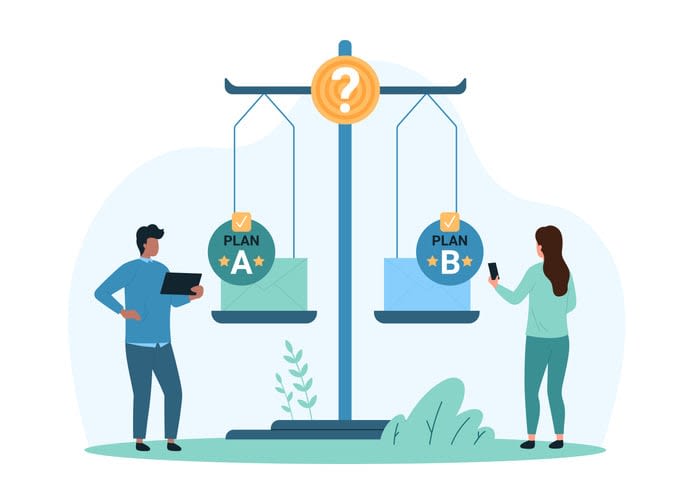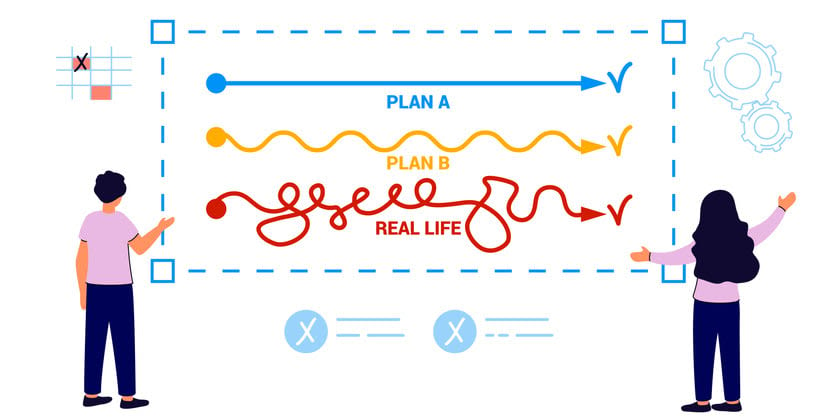Do you have a strategy for the unexpected? A contingency plan is a critical safeguard, enabling businesses to react swiftly when unforeseen events threaten operations. This guide outlines actionable steps for establishing a reliable plan, focusing on risk identification, response strategies, and maintaining business continuity. Learn to reinforce your business against disruptions with a comprehensive contingency plan.
Key takeaways
- Contingency planning in business is essential for managing unforeseen challenges and maintaining operations during crises by foreseeing potential risks and preparing actionable response plans to a range of threats such as natural disasters and cyber-attacks.
- Creating a contingency plan involves identifying critical business functions and assets, analyzing risks with a prioritized response strategy, and establishing clear roles and communication channels to ensure team readiness and effective crisis management.
- Regular implementation, testing, and updating of contingency plans are vital, leveraging training, stakeholder engagement, and technology like automation and centralized information systems to ensure plans are practical and can evolve with the business and changing risks.
Kumospace can be leveraged as a virtual space for conducting contingency planning and crisis management simulations. By providing a realistic and interactive virtual environment, teams can practice response strategies for various scenarios such as natural disasters and cyber-attacks, ensuring team readiness. Kumospace can facilitate real-time communication, role-playing, and decision-making exercises, making it an integral tool for regular implementation, testing, and updating of contingency plans.
Understanding contingency plans in business

In the world of business, the ability to pivot and adapt in the face of unforeseen challenges is not just an advantage—it’s a necessity. Contingency planning is the strategic foresight that empowers organizations to do just that. It’s the process of peering into the future, envisioning possible scenarios, and crafting actionable response plans.
Think of it as a chess game where each move is calculated to safeguard your operations, mitigate business risks, and maintain business continuity. Creating a contingency plan prepares you not only to weather the storm but also to emerge from it unscathed.
The role of contingency planning in business resilience
Consider contingency planning the backbone of your business’s resilience. It’s what keeps the lifeblood of your business flowing—your operations—during times of crisis management. Anticipating and preparing for the unexpected enables businesses to activate business contingency plans that bridge the gap between disruption and recovery.
Imagine having a tailored response at your fingertips, one that’s been meticulously designed to handle everything from:
- cyber threats
- economic downturns
- supply chain disruptions
- customer complaints
- employee conflicts
This is not just about surviving; it’s about thriving amid adversity, ensuring that the wheels of your business keep turning, no matter what.
Distinction between contingency plans and other strategic plans
While contingency plans may seem like just another item on the strategic planning docket, they stand apart in their proactive approach. They differ from crisis management, which is inherently reactive, dealing with the here and now of emergency situations. Instead, crisis management contingency planning involves creating contingency plans as your crystal ball, helping you foresee and prepare for potential future risks.
These plans are not about fixing problems but preventing them from happening in the first place, giving you a unique advantage in safeguarding your operations against a spectrum of possible threats.
Crafting your business's emergency blueprint

Embarking on the contingency planning process is akin to drafting an architectural blueprint for your business’s emergency response. It’s a step-by-step guide to identifying your company’s structural integrity—its critical business functions and assets. This blueprint encompasses everything from a thorough business impact analysis to assigning roles and establishing communication channels, ensuring that when disaster strikes, your team isn’t caught off guard.
Many businesses overlook this crucial preparation step, but those who take it seriously find themselves standing strong while others falter.
Identifying critical business functions and assets
What keeps your business engine running? Identifying critical business functions and assets is the cornerstone of any contingency plan. It’s about recognizing the aspects of your business that simply cannot fail without severe consequences. These are your company’s lifelines, the critical data that must be protected, the business operations that must remain unimpeded.
Conducting a business impact analysis illuminates these vital areas, ensuring your contingency planning concentrates on the most critical areas.
Analyzing risks and formulating response strategies
With your critical business functions in the spotlight, it’s time to play the ‘what if’ game. Analyzing potential risks isn’t about pessimism; it’s a strategic move to prepare for all the risks that might cross your path. This step involves a deep dive into the potential threats to your business and formulating contingency strategies that are as robust as they are flexible.
Quantifying the potential impact of each risk allows you to create a prioritized playbook of response strategies, ready for immediate activation.
Assigning roles and establishing communication channels
In the heat of a crisis, clarity is king. Assigning clear roles and establishing open communication channels are the final touches on your emergency blueprint. When each member of your team knows exactly what to do and whom to contact, you can manage stakeholder communications with precision and authority.
This prepares a well-oiled machine, with leadership at the helm, to navigate through choppy waters.
Real-world contingency plan scenarios

The true test of any best practice contingency planning lies in its real-world application. Through the lens of practical scenarios, the theoretical becomes tangible, and the preparation proves its worth. Contingency plan examples, such as navigating supply chain disruptions or responding to a data breach demonstrate how these plans are your script for maintaining normal operations when the unexpected turns reality on its head.
Examining these scenarios allows businesses to glean insights, refine their strategies, and prepare for any eventuality, including unexpected events.
Overcoming supply chain disruptions
Supply chain snags are more than just a hiccup; they can grind your business to a halt if you’re not prepared. A supply chain contingency plan is your safeguard against these disruptions, ensuring that the flow of goods remains steady even when suppliers falter.
From diversifying your supplier base to maintaining buffer stocks, your contingency plan should be a multifaceted approach that keeps your operations humming along, undeterred by external hiccups.
Data breach response tactics
In the digital age, a data breach is a specter that looms over every business. An effective response plan is your firewall, protecting your organization’s reputation and customer trust. When managers of a large social network faced a customer data breach, their contingency plan kicked in, not just to seal the breach but to manage the fallout.
It’s a dance of precision and prompt action, all choreographed through your contingency planning.
Navigating natural disasters
When nature decides to rewrite your business’s script, a comprehensive natural disaster contingency plan is your ticket to continuity. Multi-channel communication strategies become your megaphone, ensuring that every emergency notification is heard loud and clear, no matter the chaos that surrounds it. This approach provides a lifeline to those affected, offering guidance and direction when it’s needed most.
Constructing a robust business continuity plan

Building a robust business continuity plan is like constructing a fortress around your business operations. It’s about having detailed protocols for every eventuality, including business continuity plans that cover:
- The immediate activation of the plan
- Long-term recovery strategies
- Remote work capabilities
- Data backups
- Alternative office spaces
This plan is your blueprint for resilience.
It’s a comprehensive approach to ensure that, come what may, your normal business operations remain on course.
Developing a disaster recovery plan
At the heart of your business continuity plan lies the disaster recovery plan (DRP). It’s your playbook for bouncing back from the brink, designed to restore your critical systems and precious data swiftly. This plan outlines the necessary actions to reduce downtime and recover operations, with clear objectives and timelines.
It’s about having a backup plan that’s been practiced to perfection, so when the moment of truth arrives, your business can recover with grace and efficiency.
Integrating preventive controls into your contingency strategy
A strong offense is your best defense, and that’s where preventive controls come into play. Integrating these controls into your contingency strategy is a proactive approach to keep potential crises at bay. From automated data security to business continuity software, these tools work silently in the background, fortifying your business against threats before they can take root.
It’s about being one step ahead, always.
Keeping your contingency plan up to date
A contingency plan is a living document, one that needs to evolve as your business grows and the landscape changes. Keeping your plan up to date is more than a good practice—it’s a necessity. This involves adapting to new risks, refining strategies, and equipping your team with the latest playbook.
Regular reviews and updates keep your contingency plan in lockstep with the dynamic world of business, ready to face tomorrow’s challenges.
Implementing and testing your contingency plan

Even the best-laid plans rely on effective execution, hence the critical importance of implementing and testing your contingency plan. This phase is about bringing your strategies to life, training your team, and engaging stakeholders to ensure that when it’s showtime, the performance is flawless.
Simulating scenarios and fine-tuning the plan based on feedback transforms your contingency plan from a theoretical safety net into a practical toolkit while keeping your strategies sharp and effective.
Training employees and engaging key stakeholders
A contingency plan is only as effective as the people who enact it, which is why training employees and engaging key stakeholders is essential. Through targeted training and regular practice, your team becomes a cohesive unit, ready to respond to crises with precision.
Cultivating an organizational culture that values learning and resilience ensures that every stakeholder, from the executive suite to the front lines, is invested in the contingency plan’s success.
Simulating scenarios and evaluating readiness
How do you measure readiness? By testing it. Simulating scenarios through drills and exercises isn’t just about ticking a box; it’s about uncovering weaknesses, refining responses, and building confidence. Regularly testing your disaster recovery plan ensures that when the time comes, your team isn’t just following a script—they’re performing it with the finesse of a well-rehearsed act.
Adjusting the plan based on feedback
The cycle of planning, testing, and adjusting is continuous, and feedback is the fuel that drives improvements. After each training exercise, gathering insights and incorporating them into the plan polishes your contingency strategy to a shine. It’s an iterative process that ensures your plan doesn’t just keep up with changes—it stays ahead of them.
Leveraging Kumospace for enhanced contingency planning
Using Kumospace enhances the efficacy of contingency planning by providing a dynamic and interactive platform for simulations and training exercises. In a realistic virtual environment, businesses can conduct comprehensive drills and scenario-based training that mirror real-world challenges. This immersive approach not only improves team readiness and coordination but also facilitates clear communication and role assignment during crises. By leveraging Kumospace, businesses can regularly test and update their contingency plans, ensuring they remain practical and effective. Additionally, the platform's capabilities in real-time communication and decision-making exercises support a culture of preparedness and resilience, transforming theoretical strategies into actionable, well-rehearsed responses.
Tools for risk management and analysis
The right tools can transform the complexity of risk management into a structured, data-driven process. Business continuity software and risk registers are technological allies that help you identify, analyze, and mitigate risks. These tools offer a centralized approach to manage potential threats, ensuring that you’re not just prepared for risks—you’re actively preventing them.
Automating alerts and responses for faster reaction times
Automation proves invaluable when every second counts. It guarantees that the right people receive the right information at the right time, enabling swift action.
Emergency notification systems can trigger a cascade of predefined actions, enabling your team to respond quickly and effectively, regardless of the crisis at hand.
Summary
Mastering your contingency plan is about more than just ticking off a list of best practices—it’s about engraving a culture of preparedness into the very fabric of your business. From understanding the nuances of contingency planning to leveraging technology like Kumospace for enhanced responses, you now have the tools to construct a blueprint for resilience. By using Kumospace, you can conduct realistic simulations, centralize crucial information, and facilitate real-time communication, ensuring your team is always ready for any scenario. It’s time to step into the role of a master strategist, one who sees beyond the horizon and prepares for every possibility. Let this be your call to action, to build a foundation so strong that when the winds of change blow, your business stands firm, ready to seize opportunity amidst the chaos.
Frequently asked questions
Contingency planning in business involves preparing for potential future risks and unforeseen events to ensure business continuity and resilience. It is a strategic approach to mitigate disruptions.
A business should ideally review and update its contingency plan at least once annually to ensure its effectiveness and relevance, but more frequent reviews may be necessary when significant changes occur.
An example of a critical business function that needs a contingency plan is a company's online sales platform. Any disruption could have severe financial and reputational consequences, making it imperative to have a robust contingency strategy in place.
Kumospace enhances contingency planning by providing a virtual platform for realistic simulations and interactive training, ensuring teams are well-prepared for crises. It centralizes critical information and communication protocols, enabling quick and efficient access during emergencies. Additionally, Kumospace supports real-time updates and coordinated responses, improving overall crisis management and resilience.
No, contingency planning is necessary for businesses of all sizes, as every business faces risks that can disrupt operations, and having a well-crafted plan ensures effective response to crises and continuity.





